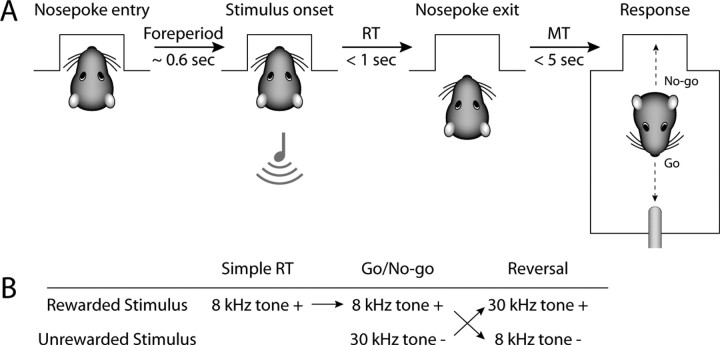Figure 1.
Behavioral paradigm. A, Trials began when rats inserted their snout into the nosepoke aperture. If they maintained this posture for 0.6 s (delay period), an auditory stimulus was presented. Rats then had to withdraw from the nosepoke within 1 s from stimulus onset (RT) and cross the chamber to collect a water reward within 5 s (MT). This was called a Go response. If rats did not attempt to contact the spout promptly this was called a No-go response. On No-go responses, rats typically initiated a new trial by reinserting their snout in the nosepoke aperture. B, The first stage of training used a simple reaction time task, in which an 8 kHz tone was used as the rewarded stimulus (8k+). Go responses to this stimulus were always rewarded. Next, animals experienced discrimination training, and were presented with an equal number of trials using 30 kHz tones as an unrewarded stimulus (30k−). Go responses to the unrewarded stimulus led to a timeout. In reversal training, the values of the two tones reversed, i.e., the 30 kHz tone was now rewarded (30k+) whereas the 8 kHz tone was now unrewarded (8k−). In all sessions, 10% of trials had no stimulus and served as catch trials to assess the rats' bias to respond for reward independent of the stimulus.

